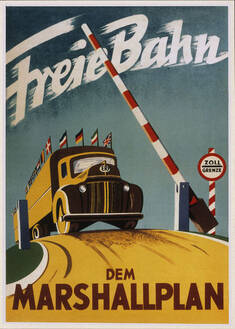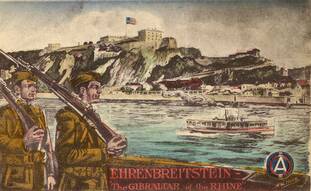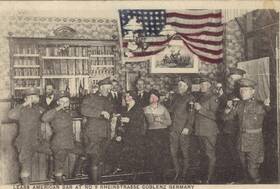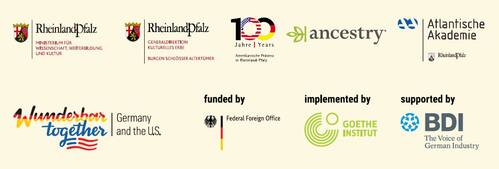The American Occupation in Germany after World War I (1918–1923)
The rapid economic development and prosperity of post-war Germany has always been associated with the European Recovery Program (ERP) of George C. Marshall (1880–1959). As Secretary of State, Marshall implemented his economic program of rebuilding war-torn European nations and was awarded the Nobel Peace Prize in 1953 for his actions. His profound knowledge and understanding of the complicated circumstances of the defeated European nations arose from his personal experiences during the post-World War I period. As Adjutant to General John J. Pershing (1860–1948) the Commander of the American Expeditionary Forces, Marshall had first visited the Rhine region in the aftermath of World War I.
After two World Wars, Germany has long proven itself a political partner and friend of the United States. Over 50,000 servicemen and women are still stationed in the state of Rhineland-Palatinate, a federal state that has been shaped by the presence of Americans like no other, as part of the NATO commitment. Today, Ramstein Air Base remains one of the most important strategic installations of the U.S. Air Force in Europe.
Largely forgotten from the common memory of both Rhineland-Palatinate and the United States, however, is that already after the end of the First World War through the year 1923, a wide swath of land from Trier to Koblenz formed an American occupation zone.
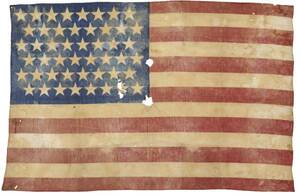
- Original U.S. flag from the time around World War I. This flag was owned by Daniel Osborne, who had come to Koblenz with the American occupation troops. Sources say the flag hung on the fortress door until the American withdrawal in 1923. Only after World War II did it return to Koblenz as a gift (Generaldirektion Kulturelles Erbe Rheinland-Pfalz).
The first American Occupation of Germany from 1918 to 1923 laid the foundation of a long relationship between our two countries. The historical background of this relationship - the post-World War I period - is all but forgotten amongst the people of both nations. These four years were formative in terms of politics, economics, as well as social and cultural exchange. The American Doughboys brought jazz, the boogie-woogie, baseball, chewing gum, pancakes and even Coca-Cola to the Rhine. Although Prohibition had been introduced in the U.S., the Doughboys in the Rhineland could enjoy German beer and wine. Numerous relationships, marriages and children grew out of the contact with the German “Fräuleins” during this occupation. To this day, many Americans and Germans do not know that they share common ancestors who met during the occupation period.
The Institute for Regional History at the Johannes Gutenberg-University in Mainz (Institut für Geschichtliche Landeskunde an der Universität Mainz, e.V.) has undertaken an academic project to research this phase of American Occupation in Germany after World War I. Its goal is to illustrate to both Germans and Americans how long this relationship between our two countries has actually existed.
The exhibition “Stars and Stripes over the Rhine. The American Occupation in Germany after World War I (1918–1923)” is a contribution of the “Institut für Geschichtliche Landeskunde an der Universität Mainz e. V.” (Institute for Regional History at the Johannes Gutenberg University in Mainz) as part of the campaign “Wunderbar Together. Germany and the US” (“Deutschlandjahr USA” / The Year of German-American Friendship). This initiative is funded by the German Federal Foreign Office, implemented by the Goethe-Institute, and supported by the Federation of German Industry (BDI). From October 2018 until the end of 2019, Germany and its deep ties to the U.S. were on display all across the United States, bringing with it a collection of multifaceted projects and events revolving around business and industry, politics, education, culture, and science to highlight the unique importance of transatlantic relations. For more information see: www.wunderbartogether.org
The exhibition is under the auspices of Prof. Dr. Konrad Wolf, Minister for Science, Further Education and Culture of the state of Rhineland-Palatinate. It is accompanied be the film documentary “Stars and stripes over Koblenz” produced by the Südwestrundfunk (Germany). Both – film and exhibition – will be shown throughout 2019 in various locations in the United States as well as in Germany as part of the celebrations of the 100 year anniversary of the American presence in Rhineland-Palatinate, initiated by the Government of the state of Rhineland-Palatinate and celebrated in 2018/2019 (For more details: www.igl.uni-mainz.de).

